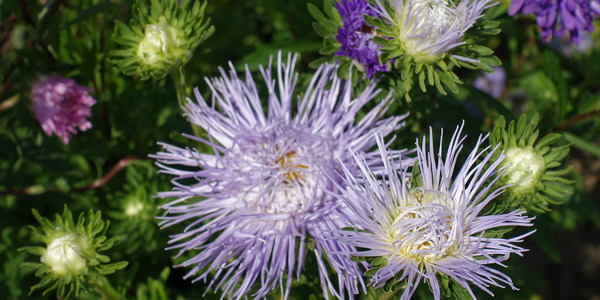
The Life Cycle of a Plant
There is a huge advantage as a grower to having knowledge of how your plants reproduce, that is, especially the cycle where they germinate, grow, flower, and then set seed ready to reproduce as almost all plants do.

Plants are generally classified by the number of growing seasons required to complete their life cycle. The life cycle of course refers to the plant growing, flowering and setting seed, and then dying. The groups are commonly referred to as: annuals, biennials, and perennials. I use “generally” and “commonly” as they do have some noteworthy exceptions, but we will discuss this later. In terms of bloom times, annuals will provide continuous blooms throughout the growing season, while biennials provide blooms during their second year of growth. Perennials bloom for 2 to 8 weeks or sometimes longer, however, bloom time will vary and depending on species can occur during the beginning, middle, or end of the growing season.

Annuals take a single year or complete season to complete a full life cycle. You are most likely very familiar with planting these in the spring, enjoying blooms in the summer, and then they die in the fall. A few, known as hardy annuals, will germinate in the later summer and autumn, then lie dormant during the winter, and grow again during the next spring and summer. Many plants treated as annuals in northern climates like most of Canada can actually be classified as perennials when grown in southern climates. These plants are not cold hardy and are not able to withstand winter temperatures in most Canadian hardiness zones. Except for those that reseed themselves, annuals will not grow a second year unless they are replanted.
Annuals are frequently placed in one of three groups: "hardy," "half-hardy," or "tender."
This classification gives you an idea as to the plants ability to withstand cold weather and freezing temperatures. This in turn reflects on when or at what temperatures the seed can be sown outdoors. And herein lies the most confusing part; as the categorization of a plant has more to do with the growing zone you live in than the plant itself. A plant you see listed as a half-hardy annual in zone 5 may be classified as tender in zone 3.

Tender Annuals, as the name suggests, cannot withstand freezing temperatures, so they must not be sown in your garden until the threat of frost has passed. Often, tender annuals will be started inside or in a greenhouse and when they reach a certain stage of maturity can be transplanted into your garden when the soil temperature is more agreeable. These tender annuals do fairly well and bloom throughout the heat of the summer.
On the opposite side of the spectrum we find Hardy Annuals. These plants are able to withstand winter temperatures, cold soil and frost. Although some who are considered hardy may not survive extreme cold or repeated swings of warm and cold temperatures. You may notice they may decline in the heat of the summer and then come back to life as cooler temperatures of the fall move in.

Half-hardy annuals, speak to the space in between tender and hardy. As you can imagine, they can live through some frost and limited amounts of cold temperatures.
It is important to understand that much of the research on varieties that will overwinter is being done in zone 6 or higher, as it has the greatest potential for results. So as a small scale grower or gardener, don’t be discouraged at not finding a definitive answer on what to plant for your zone. This is your chance to be creative, experiment and be successful with hardy plants. You have the opportunity to have a unique growing experience by planting a few seeds or plants, and recording your results. Here in zone 5 for example, we have had great luck with Amaranth, Bachelor Buttons, Larkspur, and Poppies growing in the spring from directly seeded beds after frost. Each year we try a couple of new things to see how far we can stretch the envelope, and we have been rewarded each time.

Biennials take two growing seasons to complete a full life cycle. They require a period of dormancy, that comes with cold temperatures, between plant growth and blooming. Biennials are usually sown in the spring, grow stems and leaf out during the summer, lie dormant that fall, live in this inactive state through the winter, and then flower the second summer, set seed, and die during the following fall. If biennials are grown in zones where winter temperatures are colder than the plants hardiness, it’s a good idea to provide some form of extra shelter for the plants (more on that in another blog)
Fun Fact: Some biennials, experienced gardeners treat as annuals by sowing seed in the summer or fall, that will germinate and be exposed to chilling temperatures to induce flowering in the fall and then as the plant overwinters, it will resume growth and flower the next spring. Technically less than it’s natural two year cycle, and it provides blooms earlier in the 2nd cycle than it would if you planted them in the spring.

Perennials are cold hardy enough to survive winter temperatures, hence they live longer than both annuals and biennials. Perennials are classified as either herbaceous or woody. The key difference being that “woody” plants have strong wood-like stems that usually remain and don’t die back in the winter, and herbaceous perennials are the soft stems type whose stems die back to the ground during winter. Most perennials produce flowers for between 2 and 8 years before slowing down, and the plants can be divided at the roots for further propagation.
Knowing the life cycle of the flower allows you to determine the optimal sowing time, whether starting indoors, or direct seeding.

